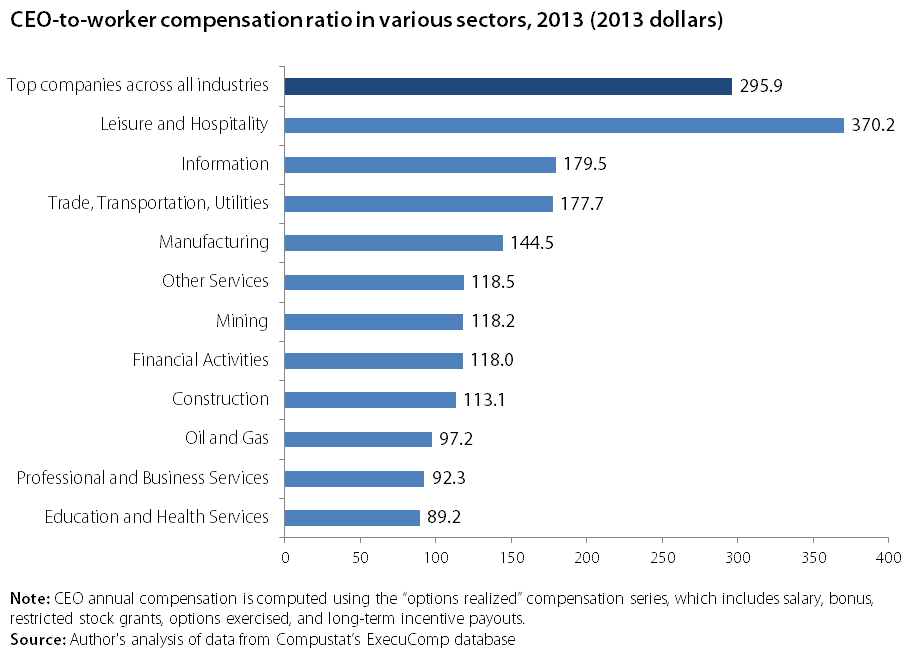The Leisure and Hospitality Sector has the Largest Gap between CEO and Worker Pay
Last week, fast food workers across the nation went on strike to demand higher wages, more regular schedules, and the right to collectively bargain. These fast food workers are a part of the restaurant industry, which Heidi Shierholz recently investigated and found to be characterized by low wages, few benefits, and high rates of poverty. But how does the experience of workers in the restaurant industry compare to its CEOs?
In 2013, CEOs of top restaurant chains in the United States made an average of $10.9 million, which is 721 times more than the minimum wage workers they employ. Restaurant are a part of the wider Leisure and Hospitality sector, which is also characterized by high rates of CEO pay and low rates of worker pay. In fact, CEOs at Leisure and Hospitality companies made, on average, 370 times the pay of a “typical” worker in that sector in 2013—making Leisure and Hospitality the worst sector in terms of disparity between CEO and worker pay. This ratio is far above the average CEO-to-worker pay ratio at all top companies, which in 2013 was 295.9-to-1. It’s also much higher than the next most disparate industry, Information, which has a CEO-to-worker pay ratio of 180-to-1, and the one after that, Trade, Transportation, and Utilities, which has a ratio of 178-to-1.
This huge disparity in Leisure and Hospitality exists for two reasons. First, CEOs in this sector are paid larger sums on average compared to other sectors. Second, typical workers are paid much less than average. In 2013, CEOs in this sector made an average of $10.5 million, making it the sector with the second most highly compensated executives, just after Information ($12.9 million). However, “typical” workers in Leisure and Hospitality were paid on average only $30,399, which is the lowest average pay for workers in any sector of the economy. And this typical worker pay is optimistic—it’s much higher than what workers who are just paid the minimum wage make in a year.
The truth is, workers are often on the losing end of poor labor practices in the Leisure and Hospitality sector. While many fast food workers are still paid the $7.25 federal minimum wage, tipped workers are paid the subminimum wage, and wage theft and erratic scheduling are rampant, CEOs in this sector benefit.

Enjoyed this post?
Sign up for EPI's newsletter so you never miss our research and insights on ways to make the economy work better for everyone.